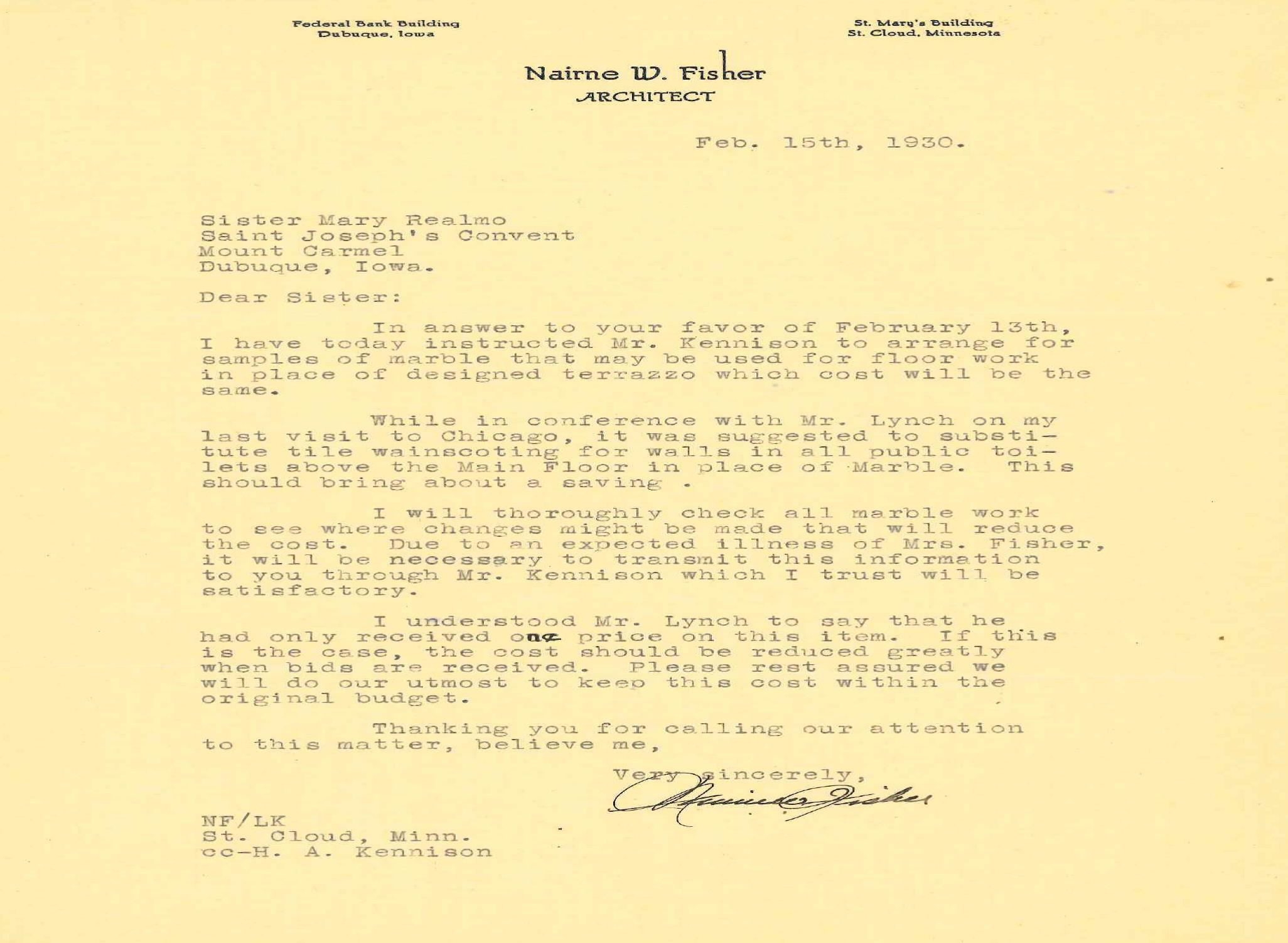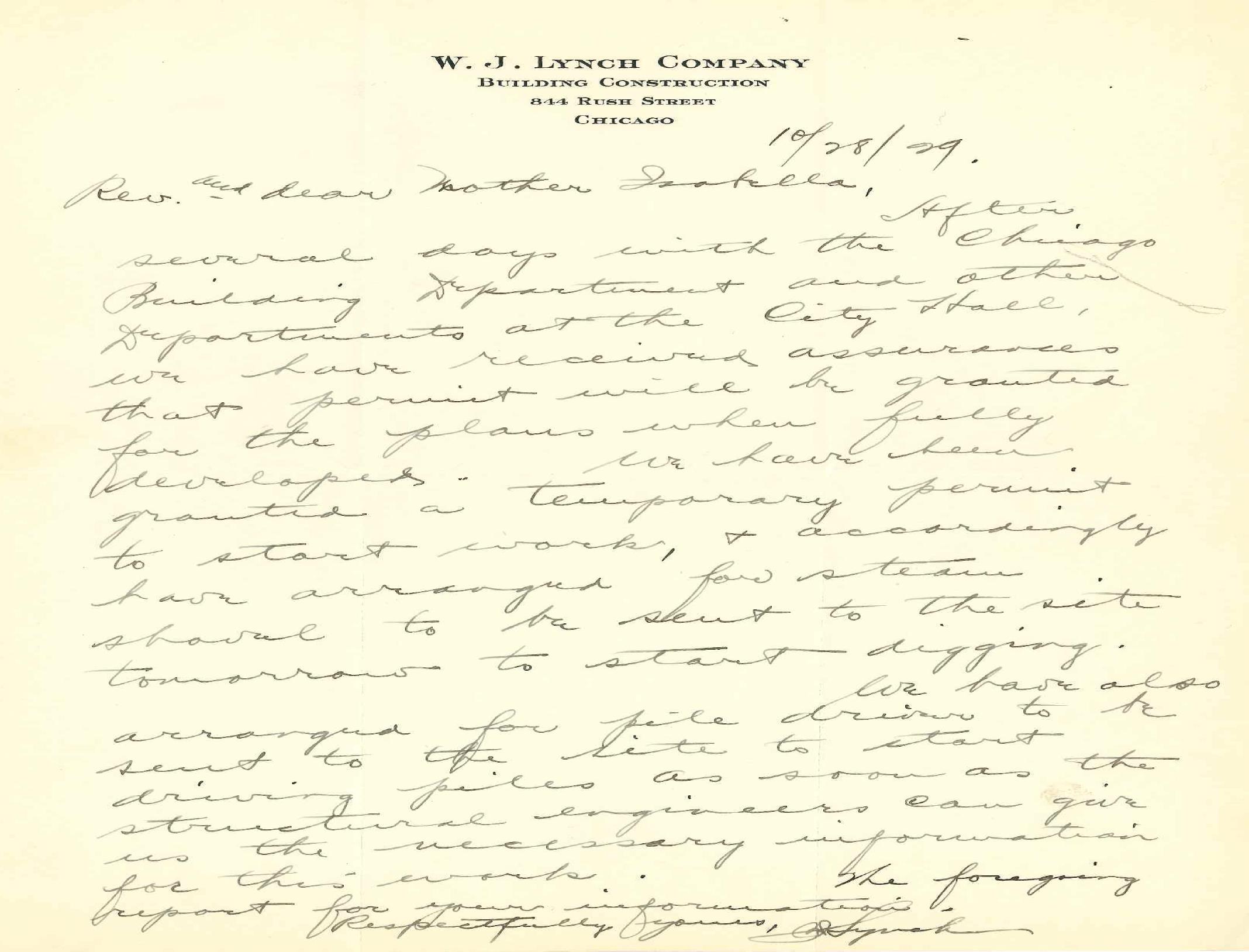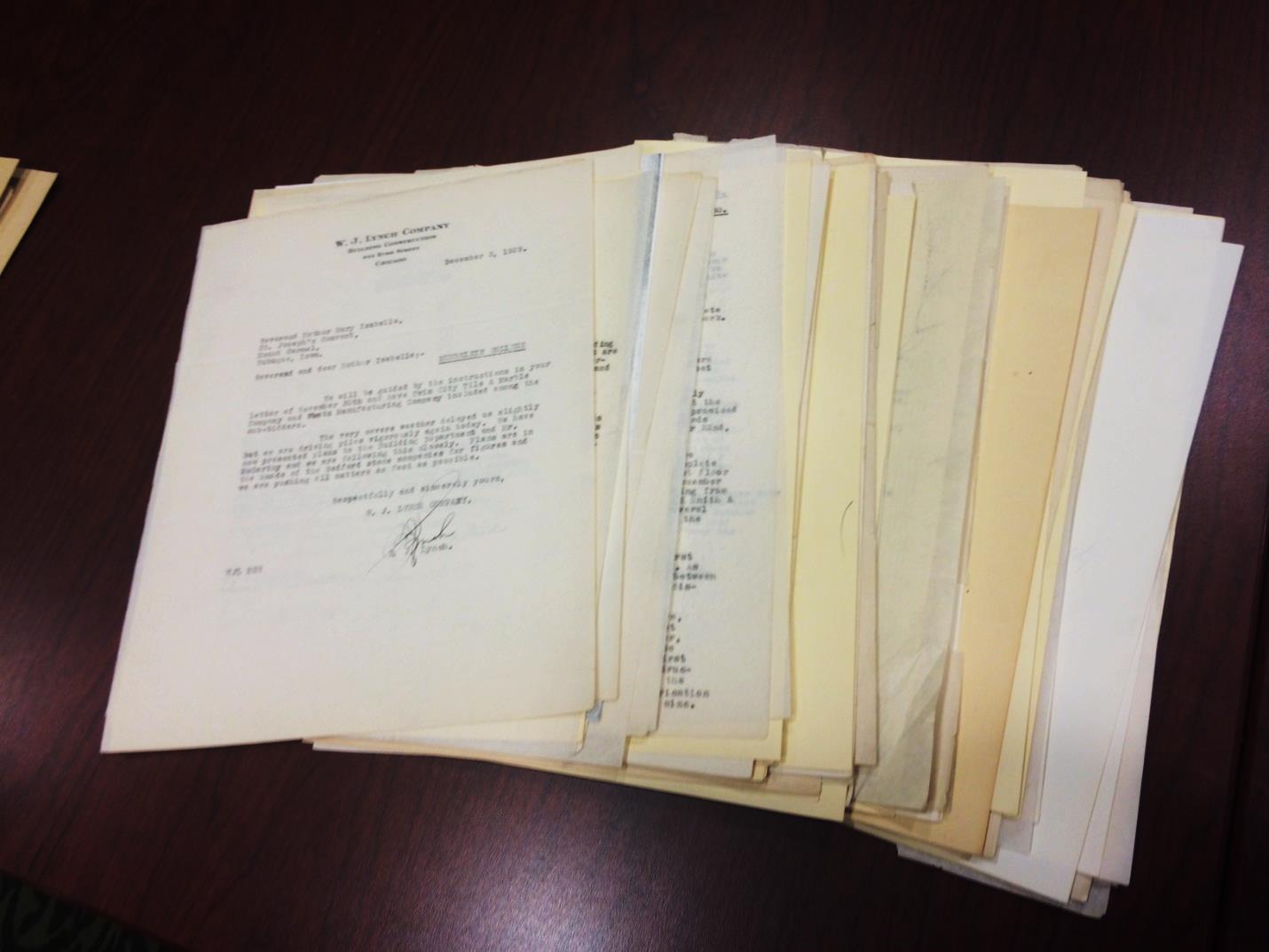Imagine you are assigned the task of building a skyscraper in Chicago. Your task, should you choose to accept it, would be to make the major decisions for the project by keeping in touch with the architects and major contractors. The catch? The year is 1929 and you are located in Dubuque, Iowa, some 175 miles from Chicago. You will also have very limited access to the telephone. I sure hope you know how to use a typewriter!
The story of how Mundelein College was constructed unfolds in the letters and telegrams housed in the Mundelein College Collection located at the Women and Leadership Archives. The Sisters of Charity of the Blessed Virgin Mary (BVM) kept the letters they received and carbon copies of the letters they sent. In-between the letters are lists of the cost of building materials, contract bids, budget reports, and general plans for the college. A majority of the letters are between Nairne Fisher, architect, and Sister Mary Realmo and Reverend Mother Isabella, head of the Order of the BVM.

Example of Nairne Fisher answering a question posed to him in a prior letter and an example of suggestions for substitutes in building materials
Many of the letters are fascinating because the content of the letters can be as short as a text message or a quick email today, but others are several pages long and include additional materials related to construction. Phone calls appear rare and some letters are in response to a message left after a missed phone call. In person visits were few and far between. Without the use of today’s technology, communicating decisions about Mundelein College through letters was very important. A simple question may have taken days to get an answer. Another thing to keep in mind is that construction of Mundelein College happened during the Great Depression after the stock market crash of October 1929.
The correspondence between the sisters and the numerous people contracted to build the college, shows the dedication of the sisters to the school as well as the frustrations of planning and budgeting. Many letters are spent on managing finances and the costs of construction materials. The sisters were meticulous about ensuring quality products at reasonable prices. They ask questions for clarification and constantly crunch numbers to see where the finances stand. Some letters highlight the problems with building the college. Prices for materials sometimes went up during construction, altering the budget, or there were a few miscommunications about how something was to be done. Some of these issues may have been exacerbated by the time it took to communicate back and forth via letters.
Looking at Mundelein College building today, I am amazed that most decisions that went into building the institution can be found in a series of letters. Nearly everything from the materials used on the exterior to the classrooms inside were decided upon without the architect or the sisters talking in person. The letters remind me to be a little more grateful that I can communicate with friends and family miles away in a matter of seconds!
Megan is a Graduate Assistant at the WLA and is in the first year of her M.A in Public History at Loyola University Chicago. She is an avid movie-goer and enjoys arts and crafts, live sporting events, and small Midwestern towns.
Loyola University Chicago’s Women and Leadership Archives Blog is designed to provide a positive environment for the Loyola community to discuss important issues and ideas. Differences of opinion are encouraged. We invite comments in response to posts and ask that you write in a civil and respectful manner. All comments will be screened for tone and content and must include the first and last name of the author and a valid email address. The appearance of comments on the blog does not imply the University’s endorsement or acceptance of views expressed.



